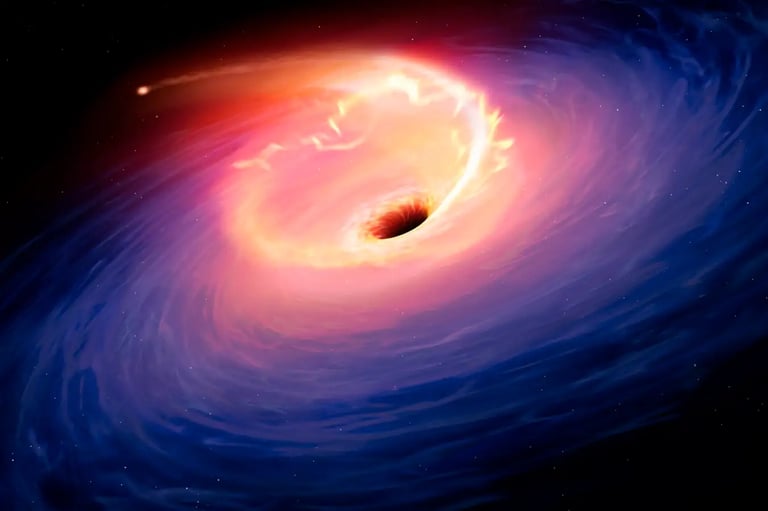Astronomers Discover Record-Breaking Tidal Disruption Event 9 Billion Light-Years Away
August 12, 2024
Astronomers have made a groundbreaking discovery of a supermassive black hole approximately 9 billion light-years away, consuming a star that is nine times the mass of the sun.
This event, designated AT2023vto, represents the largest star ever observed being destroyed in a tidal disruption event (TDE).
AT2023vto is five times more massive than the next largest star previously seen in a TDE, making it the biggest and brightest TDE detected to date.
Tidal disruption events occur when a star's trajectory brings it too close to a supermassive black hole, leading to the star's 'spaghettification' due to intense tidal forces.
During a TDE, only a small fraction of the star's mass is consumed by the black hole, while the rest is expelled or forms an accretion disk.
The black hole involved in AT2023vto belongs to a category of TDEs that do not produce relativistic jets, which typically make such events easier to detect.
The event was first detected on September 9 by the Zwicky Transient Facility (ZTF) and was initially misidentified as a Type II supernova.
The true nature of AT2023vto was determined through analysis by team leader Harsh Kumar, who modeled the light curve and identified the involved masses and distance.
Team member Yvette Cendes noted that despite being so far away, AT2023vto's brightness allows it to be visible from Earth.
This phenomenon could provide insights into understanding unusually bright cosmic objects found in the centers of certain active galaxies.
Cendes expressed interest in the possibility that the black hole could emit a relativistic jet in the future, continuing to study the event for more insights.
Tidal disruption events are recognized as some of the brightest occurrences in the universe.
Summary based on 2 sources
Get a daily email with more Science stories
Sources

New Scientist • Aug 9, 2024
A black hole devouring a giant star gives clues to a cosmic mystery